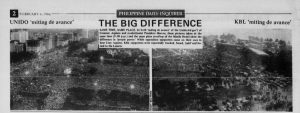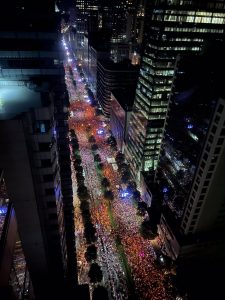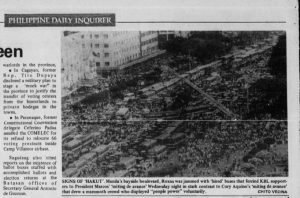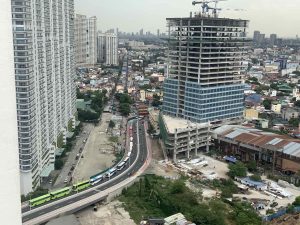There were remarkable pictures circulating online, of the two main Miting de Avance on May 7. You can actually watch coverage of the two and glimpses of the crowd in the coverage helps confirm that one was massively attended, the other, less so. The contrast couldn’t help but give a sense of deja vu to those of a certain age.
As did a stunt earlier that day, that occurred in the new bridge connecting Mandaluyong and Makati.
If the above shows that the more things change, the more they remain the same,
A study in contrasts. Similar dynamics, different behavior towards the public whose support they’re courting.
This reminds me of something I mentioned on March 11:
Some weekend thoughts on political earthquakes, which starts with what sooner or later depends on the character and personality of candidates. You know which of these two candidates actually likes the Filipino people. If you didn’t before, it’s become quite clear by now.
There are three ways to both experience and analyze a speech. The first and foremost of course is through the words used: words matter as does how they were put together and what they mean. How they sound and read.
The third is both sights and sounds: how the audience took it in, how the ine making the speech and the audience interacted or responded or not: we can either see it, or hear it. It says much about a leader and followers and if there are shared ideals.
Check this out on Chirbit
In this time of reflection do the same exercise speechwriters do. Watch and listen and see: judge the words, both message and manner and means and interactions. Then compare. And you can better judge who has something genuine to say and genuinely means it.
These are after all speeches at the end of a grueling campaign with so much at stake the last big push before the nation renders its verdict; a test of ability in many respects. You can compare, contrast, and decide.
Som watch each one.
Vote wisely!




